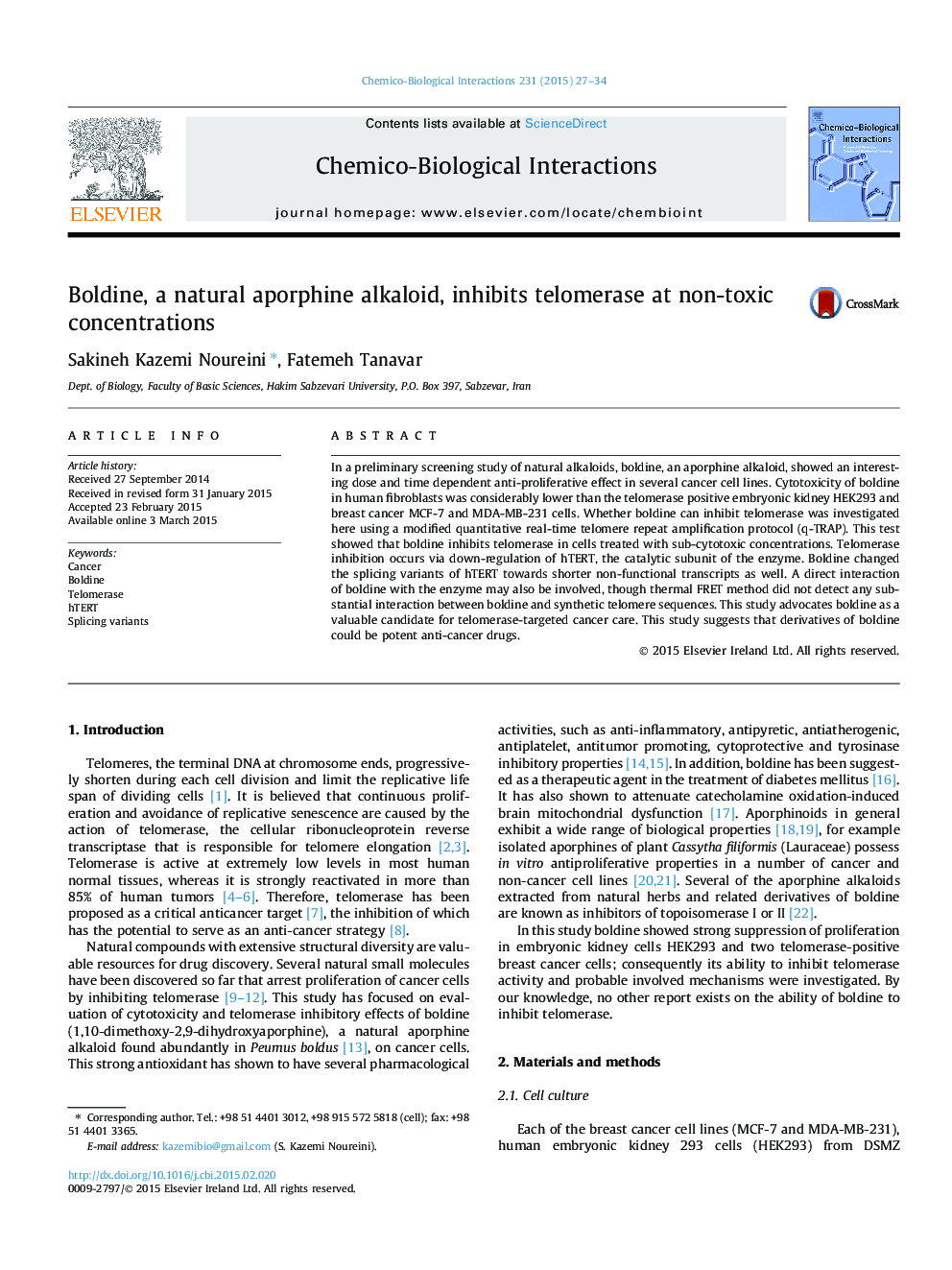| کد مقاله | کد نشریه | سال انتشار | مقاله انگلیسی | نسخه تمام متن |
|---|---|---|---|---|
| 5847858 | 1561610 | 2015 | 8 صفحه PDF | دانلود رایگان |
- Boldine exhibits stronger cytotoxicity in cancer than normal cells.
- Boldine strongly suppresses telomerase activity at sub-cytotoxic concentrations.
- Boldine inhibits telomerase mainly by down regulation of hTERT gene.
- A direct interaction may involve although not by interaction with the substrate.
- Boldine shifts the alternative splicing of hTERT towards non-functional variant(s).
In a preliminary screening study of natural alkaloids, boldine, an aporphine alkaloid, showed an interesting dose and time dependent anti-proliferative effect in several cancer cell lines. Cytotoxicity of boldine in human fibroblasts was considerably lower than the telomerase positive embryonic kidney HEK293 and breast cancer MCF-7 and MDA-MB-231 cells. Whether boldine can inhibit telomerase was investigated here using a modified quantitative real-time telomere repeat amplification protocol (q-TRAP). This test showed that boldine inhibits telomerase in cells treated with sub-cytotoxic concentrations. Telomerase inhibition occurs via down-regulation of hTERT, the catalytic subunit of the enzyme. Boldine changed the splicing variants of hTERT towards shorter non-functional transcripts as well. A direct interaction of boldine with the enzyme may also be involved, though thermal FRET method did not detect any substantial interaction between boldine and synthetic telomere sequences. This study advocates boldine as a valuable candidate for telomerase-targeted cancer care. This study suggests that derivatives of boldine could be potent anti-cancer drugs.
Journal: Chemico-Biological Interactions - Volume 231, 25 April 2015, Pages 27-34
